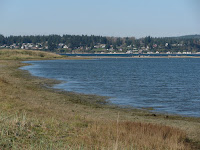Update: October 2010
The strong south westerlies that marked September carried on into October, although in the latter half of the month the wind direction reversed, with strong north easterlies prevailing. Despite the strong winds the beach is well stocked with sand, with all access ways available.. It is hoped that the high beach profile (sand levels) will be maintained over the summer months, with more settled nor' easterly weather expected over the summer.
The investigation process into the old landfill site at Kettle Park continues and it is hoped that these studies will be largely completed before Christmas. It is likely that the thrust of the Team's report to Council and any consequential recommendations for action will be largely determined by the results of these landfill studies.








.jpg)









































